
 Copyright © Michael Richmond.
This work is licensed under a Creative Commons License.
Copyright © Michael Richmond.
This work is licensed under a Creative Commons License.
The earliest and simplest telescopes are refractors. They consist of a long, narrow tube with a lens at the front end. Light which passes through the lens is bent, so that initially parallel rays meet near the bottom of the tube.

Refractors are easy to make and, when small, relatively inexpensive. Large telescopes of this sort become unwieldy. The largest refractor ever put to practical use is the Yerkes 40-inch instrument; its aperture (front lens) is 40 inches in diameter. The tube is a bit longer ...
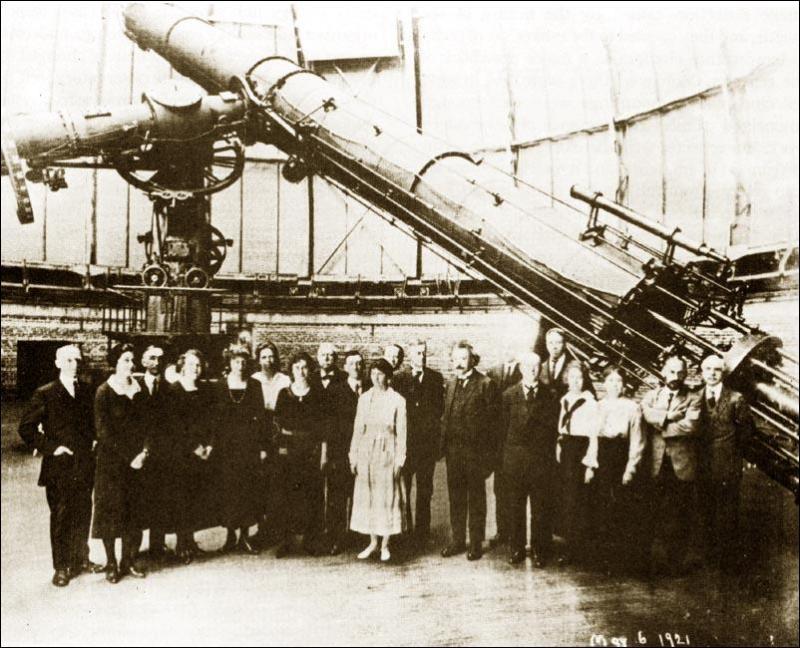
There are several drawbacks to this design:

Isaac Newton realized that mirrors would solve the second problem: they can bring light of ALL wavelengths to a common focus. He designed a telescope which used mirrors to reflect light; hence, this type is called a reflector.
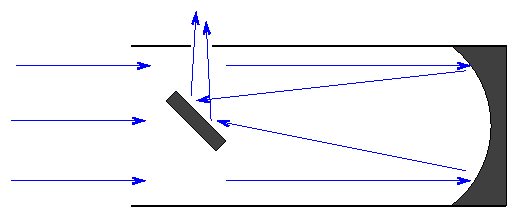
The mirror in a reflector can be supported not only around the edges, but also all over the back surface. That means that very large mirrors can be placed into telescopes. The Subaru Telescope has a primary mirror over 8 meters in diameter.
Why build large telescopes? It's not to magnify objects -- the Earth's atmosphere blurs everything to a minimum resolution of about 1 arcsecond. In order to see really fine detail in the optical, you have to move your telescope above the atmosphere:
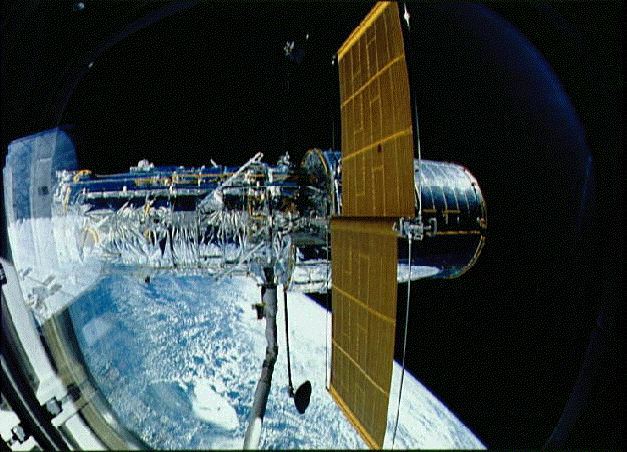
The real reason astronomers want big telescopes is to detect fainter and fainter objects. The faintest object visible in a telescope depends on the amount of light the telescope can gather ... which in turn depends on its collecting area:
2
area = pi * (radius)
Note that the collecting area increases as the square
of the radius (or diameter).
Q: The pupil in your eye has a diameter of about 5 mm.
The little telescope at the front of the class has a
diameter of about 4.25 inches.
Q1: What is the ratio of collecting area of the telescope
to collecting area of the eye?
Q2: How many times fainter are the faintest objects you can see
in the telescope, compared to the faintest object you can
see with your naked eye?
Q3: If the unaided eye can see stars of mag m = 5,
what is the magnitude of the faintest stars visible
through this telescope?
At some point, Q however, even though you can support your big mirror across its entire back surface, the mirror becomes so big and so heavy that it starts to sag. Even worse, as you move your telescope to point to different regions of the sky, your mirror will sag in different ways. The mirror will no longer bring all the light rays to a single focus. Our current technology has just about reached that point with mirrors of diameter 8 meters.
What can you do if you want to see even fainter objects?
Answer: use an array of smaller mirrors.
The Keck Telescopes:
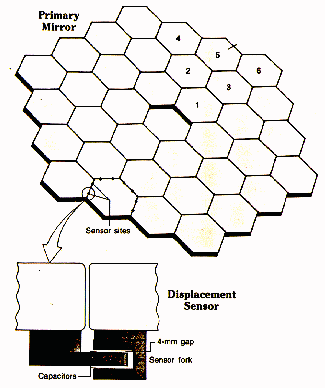
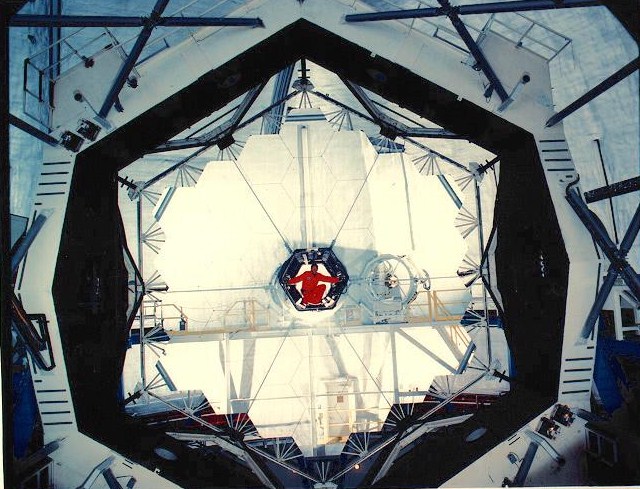
The Hobby-Ebberly Telescope:
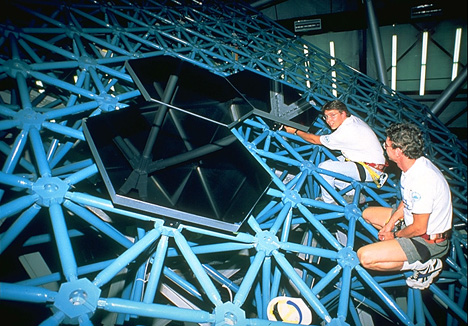
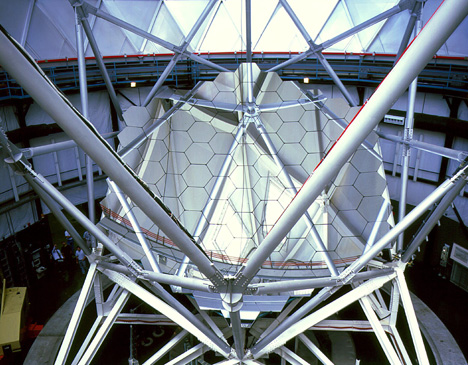
The James Webb Space Telescope:
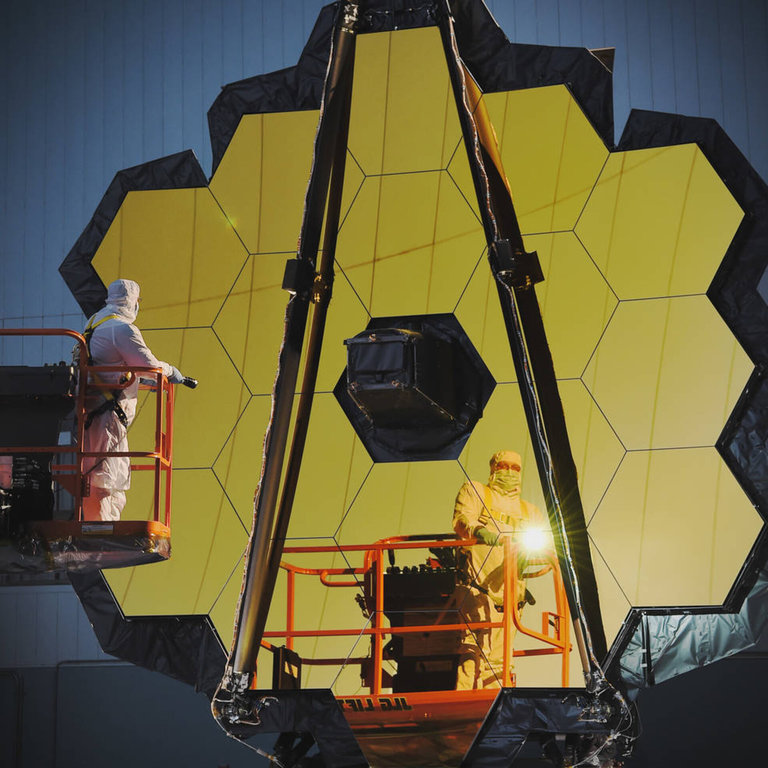
Image courtesy of
European Space Agency
 Copyright © Michael Richmond.
This work is licensed under a Creative Commons License.
Copyright © Michael Richmond.
This work is licensed under a Creative Commons License.